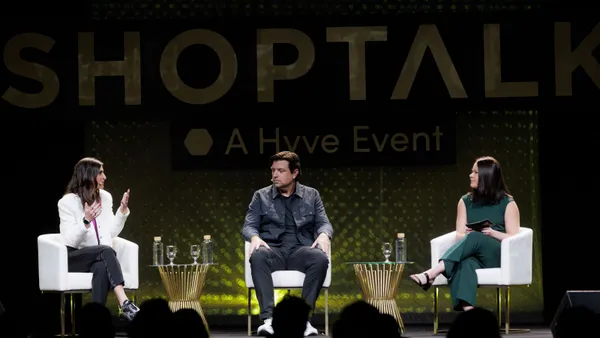Dive Brief:
- Signaling the long-term impact of inflation, nearly two-thirds (61%) of respondents to a survey commissioned by Forter and conducted by Talker Research said they had changed their online shopping habits in response to higher prices. Almost 90% of respondents said their cost of living has gone up over the past five years.
- Given price increases, about half (48%) of respondents said they’ve considered stacking multiple coupons or reselling highly desired products, the survey found. The highest spending categories online are groceries, clothing and home goods, according to the report.
- Among the factors that persuade online shoppers to buy from a certain brand are free shipping (63%), affordable goods (61%), frequent sales (36%), free and straightforward returns (34%) and loyalty incentives (33%).
Dive Insight:
Forter and Talker Research’s report suggests that consumers are altering their shopping behavior in response to ongoing inflation woes.
Food-at-home prices saw an annual rate bump of 1.2% in March. The Consumer Price Index’s latest report noted that food prices rose 2.1% year over year in May. In a statement in April, President Joe Biden said that housing and grocery prices remain excessive and called upon retailers to cut prices.
Customers look for ways to reduce their spending and cut corners when in a financial pinch, Doriel Abrahams, principal technologist at Forter, said in a statement. Consumer spending is slowing as consumers balance lower savings, decreased wage growth, rising credit card debt and increasing premiums, a report from The Conference Board noted.
“The cost-of-living increase means that consumers are fundamentally altering their online shopping habits,” Abrahams said in a statement. “Brands that want to maintain customer loyalty and value in this macro environment must evolve, too. From the simple – but important – perks to the full checkout experience, consumers want more and better from their favorite brands.”
As shoppers hunt for bargains in response to stubborn inflation, some have turned to affordable private-label brands. The Food Industry Association’s recent Power of Private Brands report found that 55% of grocery shoppers have purchased more private-label brands over the past year, a greater proportion compared to 28% of consumers who bought more name brands during the same period.













